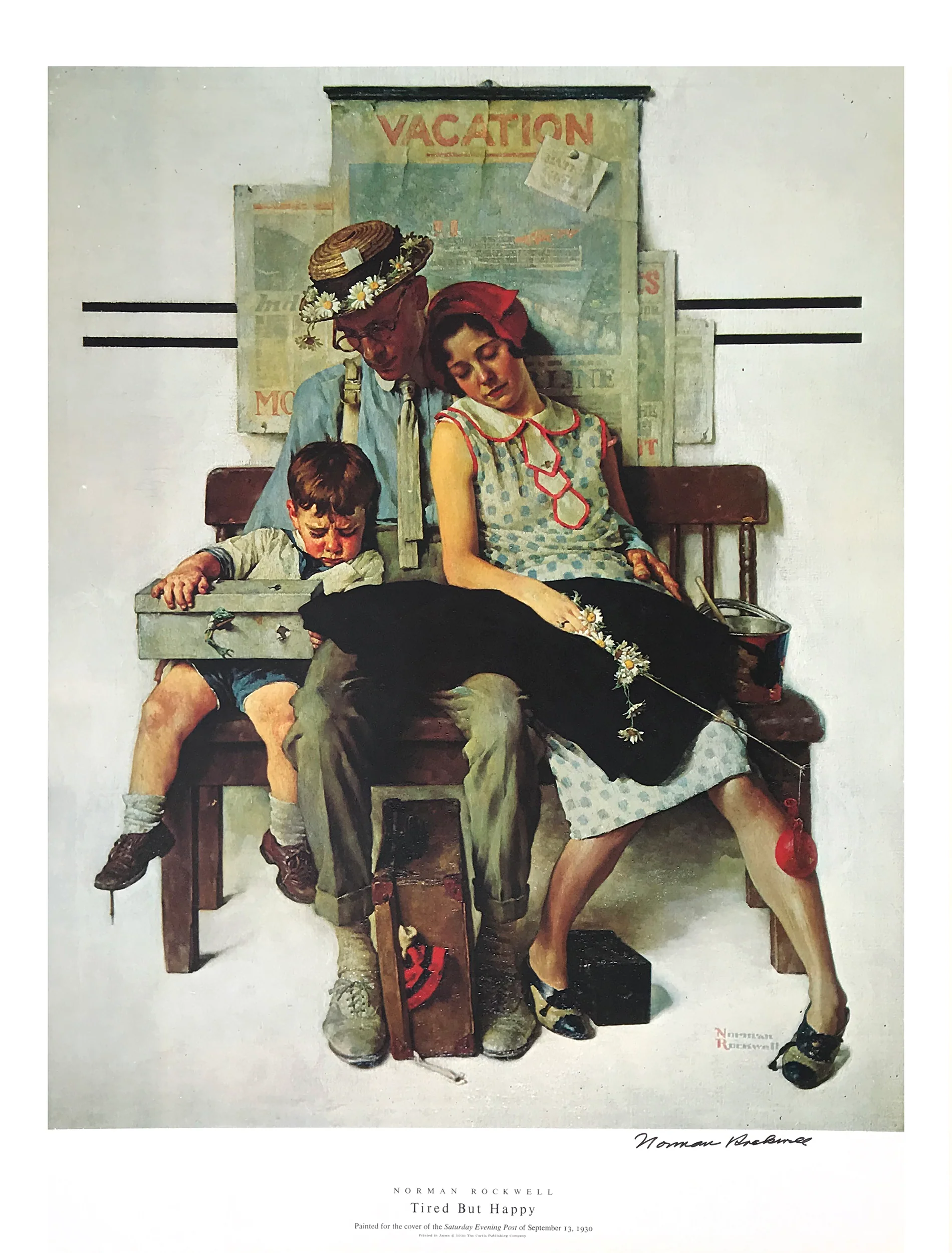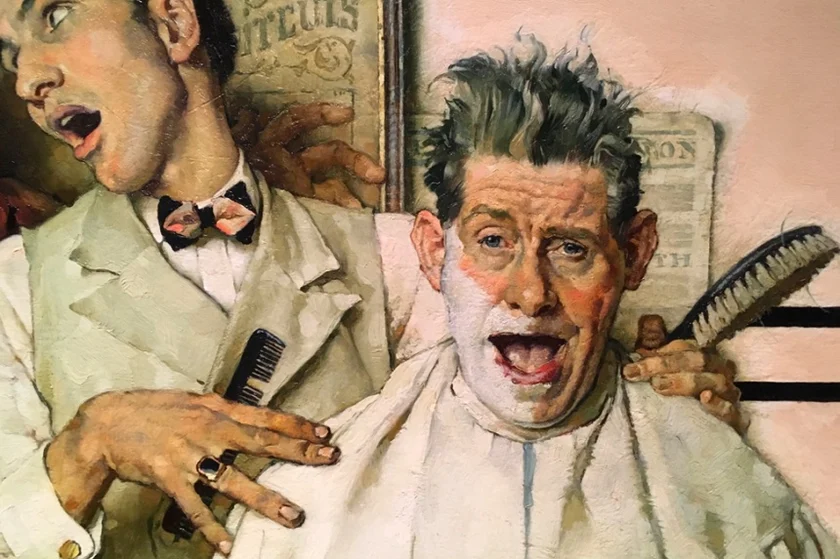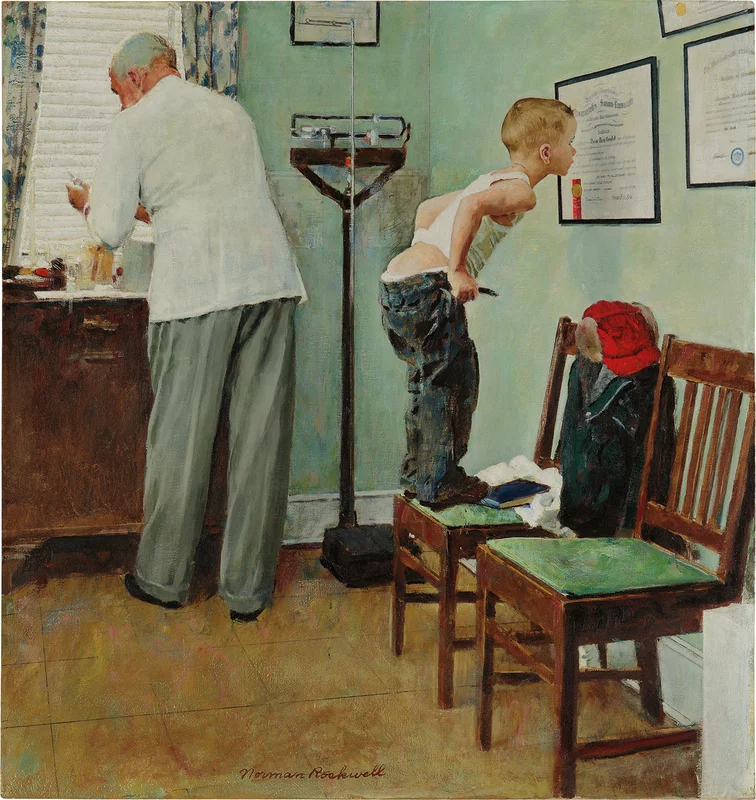Norman Rockwell
- Aljoheri
- May 1, 2024
- 4 min read

Norman Perceval Rockwell, an American writer, artist, and illustrator of the 20th century, is esteemed by the American public for his depiction of American society. As a result, he has become one of the most celebrated artists in the United States.
Rockwell's admiration for rural life could lead one to assume he grew up on a farm. However, he was actually born and raised in New York City, where he encountered urban violence within popular neighborhoods. He developed an idealistic view of country living from early experiences of spending holidays in the countryside with his family. Surrounded by books, Rockwell honed his artistic skills by copying illustrations while growing up, leading him to enroll at the Chase Art School in Manhattan at 14 with aspirations of becoming a professional illustrator rather than a painter.
At the age of 16, Rockwell began his professional illustration career by creating Christmas-themed designs for greeting cards. In 1911, he completed his first book illustration for Tell-Me-Why: Stories about Mother Nature by C.H. Claudy. His involvement with youth magazines like Boy's Life led to him producing artwork for the cover, including Scout at Ship's Wheel in 1913. By the time he was 19 in 1914, Rockwell had already assumed the role of artistic director at a magazine.
When the First World War broke out, the artist tried to join the US Navy but was turned down due to being underweight. He quickly gained weight and was drafted as a military artist, focusing on developing his artistic skills while serving. At the age of 21, he relocated with his family to New Rochelle, a suburb of New York. There, he established a studio with a fellow cartoonist named Clyde Forsythe. He began creating illustrations for prestigious publications such as Life and The Saturday Evening Post; ultimately contributing over three hundred covers during his continuous 47-year tenure with the latter publication.
In addition to his love for illustration, Rockwell had a deep fondness for depicting children in his paintings. He crafted an enchanting fictional world where the central figures were children and their dreams, aspirations, and experiences. This artistic approach served as his response to the turmoil of war and the violence he encountered during his childhood in New York. He was firm in his belief that America needed to focus on shaping its new generation in order to establish a society capable of preserving innocence and nurturing responsible adults.
He had a passion for traveling, making five trips to Europe in the 1920s and 1930s, followed by visits to South America and Africa. Inspired by European art, he dabbled in modern artistic expressions. Despite this, the head of the Post advised him to stick with his own style. In 1930, Rockwell ventured to California where he formed a friendship with Walt Disney.
In 1939, Rockwell's family relocated to Arlington, Vermont. He developed a deep appreciation for the natural scenery and the unhurried way of life there. Inspired by this tranquil setting, Rockwell embarked on a new artistic direction that would define his career and endear him to the American public. He produced numerous sketches, paintings, and illustrations depicting everyday life in small-town America, utilizing over 200 local residents as models. Several other artists also gathered in Arlington to collaborate with Rockwell, forming an artistic community of sorts. His artwork gained widespread popularity, appearing on magazine covers, calendars, and in advertisements.
When World War II began, Rockwell produced a collection of illustrations depicting the fictional character Willie Gillis, a recruit. From 1941 to 1946, he published over ten images portraying the experiences of an average American boy from his initial enlistment to his joyful homecoming after the war. Rather than capturing combat scenes, Rockwell concentrated on portraying an idealized image of the soldier and avoided emphasizing the brutality of war.
At the same time, Norman Rockwell created a series of paintings titled The Four Freedoms, inspired by President Franklin D. Roosevelt's renowned speech on the four essential freedoms delivered to Congress. Published in 1943 in The Saturday Evening Post and reproduced as thousands of posters, this collection of works was later showcased in sixteen American cities by the Treasury Department to boost war fund collections. At 43 years old, Rockwell was too old for military service but found solace in the success of his artistic contribution—a means of aiding his country's wartime efforts despite being unable to serve as a soldier on the battlefield.
In 1964, Rockwell terminated the partnership with the Post to pursue a new professional opportunity with the magazine Look. Throughout the course of a decade, he produced illustrations that reflected his strong commitment to civil rights, addressing poverty issues, responding to the Vietnam War, and capturing mankind's exploration of space. In 1977, Rockwell was honored with the Presidential Medal of Freedom – one of America's most esteemed civilian accolades. He passed away in Stockbridge, Massachusetts in 1978 due to complications arising from pulmonary emphysema; at his funeral service, First Lady Rosalynn Carter was in attendance.
Rockwell depicted the American ideals more effectively than any other American artist in history. His artwork is now ingrained in the cultural heritage of America, despite facing criticism from contemporary art experts who saw him as more of an illustrator rather than a true artist.
References
Cofresi, D. (2006) About Norman Rockwell. Available at: https://www.pbs.org/wnet/americanmasters/norman-rockwell-about-norman-rockwell/689/.
Norman Rockwell - 239 artworks - painting (2009). Available at: https://www.wikiart.org/en/norman-rockwell.
Norman Rockwell (2022). Available at: https://www.newworldencyclopedia.org/entry/Norman_Rockwell.
Rockwell, N. (2010) Norman Rockwell Paintings, Bio, Ideas. Available at: https://www.theartstory.org/artist/rockwell-norman/.





































Comments